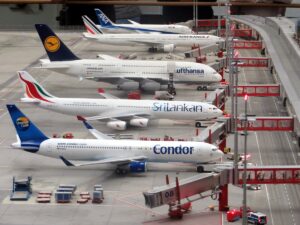Traveling city-to-city is no longer about getting from point A to point B – it’s about how efficiently, comfortably, and continuously we can do that journey. As the cities grow and people move more often for work, holidays, or family, the demand for travel solutions from the smart city has never been higher. Whether you are working weekly among business hubs or planning a weekend migration, the old ways of travel are becoming old.
The Changing Face of City-to-City Travel
The days came when your only options were a slow train or crowded buses. Today, City-to-City Yatra encompasses everything from high-speed rail networks to on-demand shuttles, and even electric aircraft are on the horizon. Passengers expect more – a faster journey, greater comfort, and an uninterrupted booking experience. This development is not only about technology; It is about features and lifestyle. Modern travelers want flexibility and control, not only transport.
Common Challenges in Traditional Travel
Inability to wait for a long time
Traditional buses and trains often include prolonged waiting times, delays, and rigorous programs. Add that time to the terminals and your “2-hour journey” will suddenly.
Hidden costs and misleading pricing
Low-ticket prices may be attractive, but add-on fees for goods, seat selection, or final-mentement changes are often more expensive than traveling.
Relaxation and convenience business
Budget-friendly travel often renounces rest. Tight seating, lack of features, and uncomfortable programs can also make for fewer trips.
Environmental concerns and stability
Older methods of transport rely too much on fossil fuels, contribute significantly to carbon emissions, and grow anxiety among conscious passengers towards the environment.
Why We Need Smarter Choices in Travel
We live in a digital-first era. Everything has become smart, from shopping to working – so why not travel? Modern travel solutions provide not only speed and convenience but also privacy.
With the help of technology, passengers can now plan, book, and manage the entire trip from their phones. In addition, intelligent options often integrate environmentally friendly solutions, which align with a global change towards stability.
Smarter Options Transforming City-to-City Travel
Ridersing and on-demand shuttle
Services such as Flixbus or Blablacar combine strength with convenience, offering routes to flexible departure times and demand.
High-speed trains and modern rail services
Countries like Japan, France, and China find a way out with trains of over 300 km/h – offering comfort and beautiful ideas, cutting the time of travel in half.
Electric buses and durable options
The next-generation buses operated by electricity or hydrogen are making city-to-city travel green and cheap without compromising credibility.
Regional aerial dynamics and small airlines
Emerging companies are searching for small flights with electric aircraft, stating how we think of “commuting” between cities.
Benefits of Smarter Travel Solutions
Savings of time without a comfortable compromise
With real-time root optimization, smart travel options reduce waiting and transit time, providing features such as Wi-Fi and huge seating.
Environmentally friendly and sustainable trip
Switching on an electric or shared travel solution reduces your carbon footprint, which contributes to a greener planet.
Cost-affect and transparency
No more surprise fees. Smart travel platforms provide transparent pricing and flexible payment options.
Safety and reliability
Modern technology ensures better vehicle maintenance, real-time monitoring, and improvement in safety standards.
Technology Driving the Change
AI, IoT, and big data are revolutionizing travel:
- AI-powered planning: Suggests the best routes and modes based on preferences.
- Real-time tracking: Keeps you updated on schedules, delays, and changes.
- Contactless payments: Simplify ticketing and reduce physical contact.
How Smart Travel Improves Your Journey
Smart City-to-City travel does not just shorten trips-it makes them pleasant. With door-to-door pick-up, integrated transfer, and digital support, your journey becomes smooth and less stressful.
Role of government and private sector
Governments are investing in infrastructure such as high-speed rail and EV charging networks, while private companies innovate with new mobility services. Together, they are shaping a future where smart travel is ideal.
Future Trends in City-to-City Travel
- Hyperloop: Ultra-fast travel that could connect cities in minutes.
- Flying taxis: A futuristic solution for short intercity hops.
- Integrated platforms: One app for booking trains, buses, and flights seamlessly.
How to Choose the Smartest Option for You
Think about how far you’re going, how much time you have, and your budget. Then compare options across apps — smart planning tools will show you the best deals and fastest routes.
Mistakes to Avoid When Traveling Between Cities
- Don’t stick to old methods — explore new travel modes.
- Avoid booking too early or too late; both can cost more.
- Don’t ignore eco-friendly options — they often save money too.
Real-Life Examples of Smart Intercity Travel
- Europe: France’s TGV connects major cities at lightning speed.
- Asia: China’s high-speed rail spans thousands of kilometers.
- North America: Apps like Wanderu simplify multi-modal bookings.
Conclusion
As our cities grow closer and our schedules busier, the demand for smarter, greener, and faster travel continues to rise. The future of city-to-city travel will be defined by innovation — and those who embrace it will enjoy easier, cheaper, and more enjoyable journeys. The question isn’t whether smarter travel is coming — it’s whether you’re ready for it.





